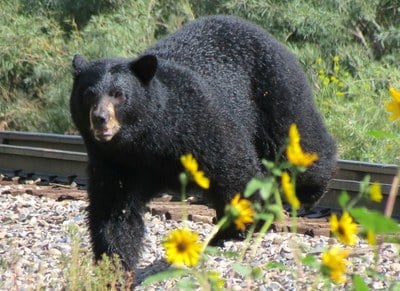Wildlife on the Move!
Colorado wildlife are on the move! Migrations to wintering habitats unfortunately leads to higher incidents of wildlife-vehicle collisions (WVCs). Each fall a group of organizations* come together to get the “Wildlife on the Move” message to motorists statewide: Be aware, drive with caution, and slow down, especially at night, when the majority of WVCs occur.
Wildlife-vehicle collisions happen year round and 24/7. Over the past ten years CDOT has seen an average of 3,300 reported wildlife hits each year. This number does not include hits that were not reported to law enforcement, and it has varied from about 2,000 to 4,000 each year. There is always an increase during migration season and particularly during the hours between dusk and dawn. These collisions are not only a matter of safety but can be quite costly as well.
“The insurance industry pays out nearly $1.1 billion a year in claims for all wildlife-vehicle collisions nationwide; a big portion of that is in the fall, and in particular November, when these types of collisions increase," Carole Walker, Executive Director of the Rocky Mountain Insurance Information Association said. “The average property damage cost of animal-vehicle collisions is estimated at $3,103, up 1.7 percent from a year ago.”
"As Colorado has an abundance of deer and elk, as well as other wildlife, that live near our urban and rural areas, motorists need to be aware that they can cross our roads without warning at most any time of day or night," said Colorado State Patrol Chief Colonel James Wolfinbarger. "Slow down and stay alert when you see a highway wildlife warning sign especially between dusk and dawn. If you see one deer or elk, expect others. Remember to scan ahead on the sides of the road for signs of movement and to watch for the shining eyes of animals that reflect car headlights at night. Most importantly, slow down and concentrate on retaining control of your vehicle. It is important to maintain control before, during and after a collision with an animal should one occur. ”
(*The organizations for the “Wildlife on the Move” campaign include the Colorado Department of Transportation, Colorado Parks and Wildlife, Colorado State Patrol, Rocky Mountain Insurance Information Agency, and Rocky Mountain Wild.)
